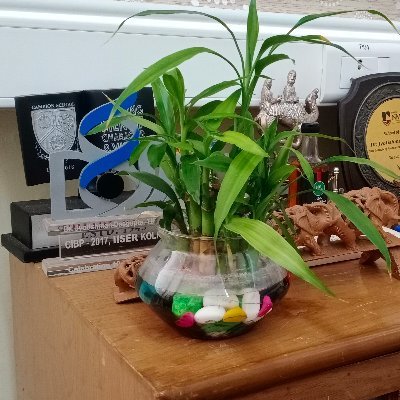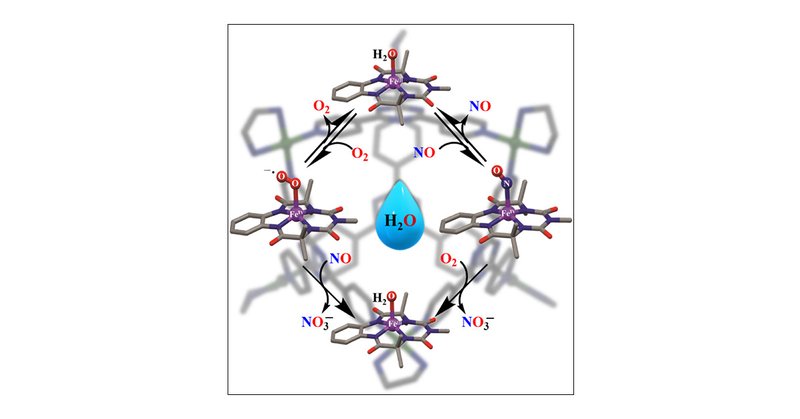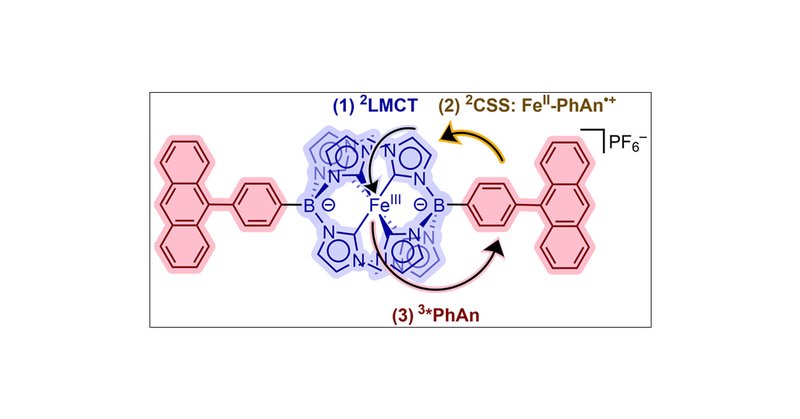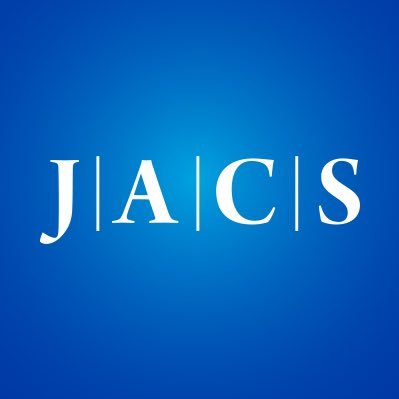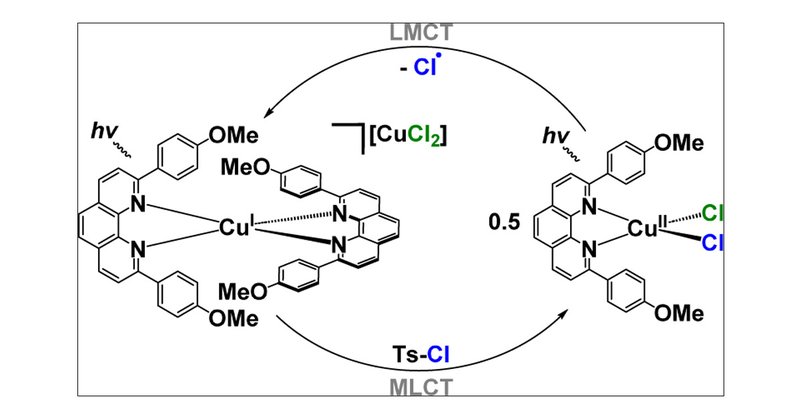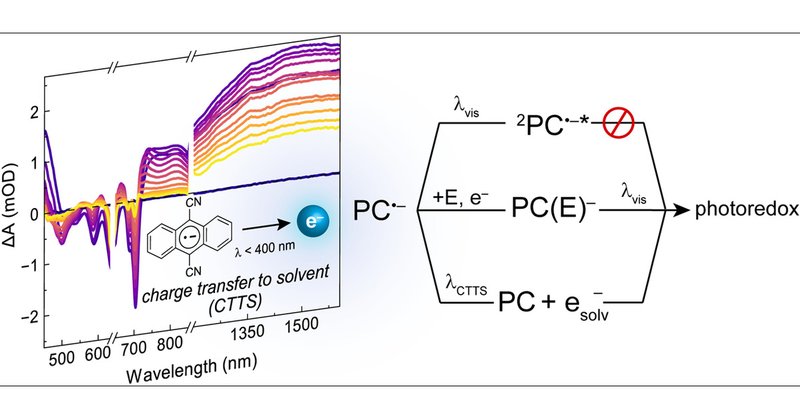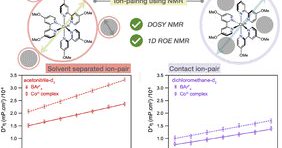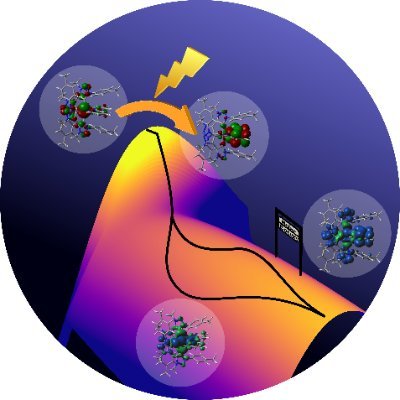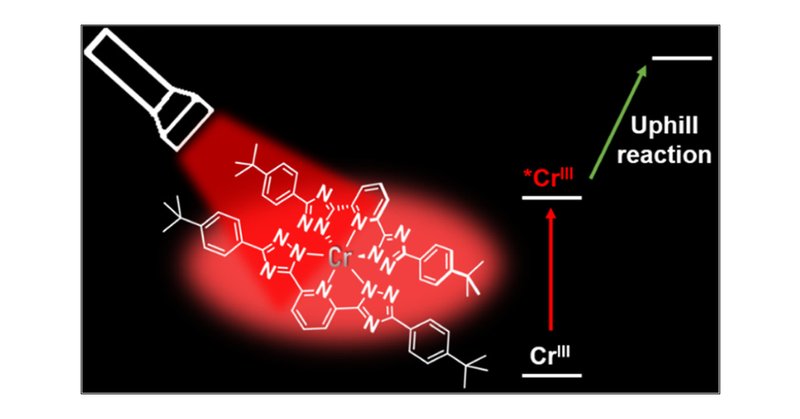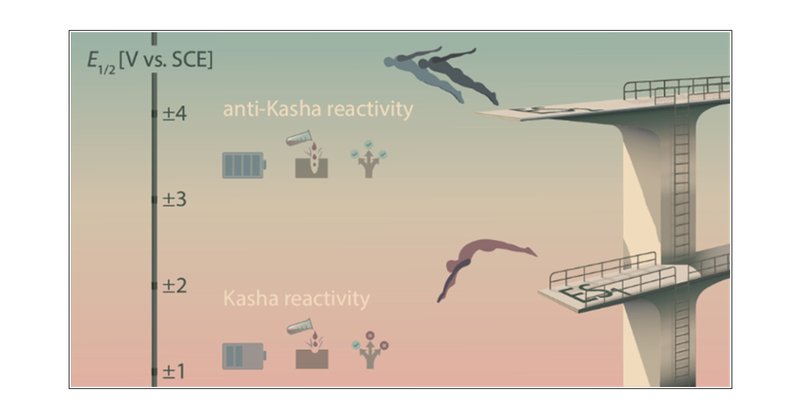
Atanu Ghosh
@ghoshata96
Followers
501
Following
3K
Media
11
Statuses
405
PhD student in McCusker_Group @MSUChem | @rkmvidyamandira @IITMadras @tifrscience alumni | ultrafast spectroscopy | metal complexes
East lansing, MI
Joined April 2021
Check out our paper @ScienceMagazine where we leverage Marcus Inverted ligand-field ES relaxation dynamics of Cobalt(III) complexes, as a photocatalyst design principle. A wonderful collaboration with @MacMillan_Lab @PrincetonChem @MSUChem
https://t.co/LHkXCx9Jbt 1/4
science.org
An unexpectedly long excited-state lifetime makes an Earth-abundant cobalt complex an effective photoredox catalyst.
18
31
233
Super excited to see lots of failed experiments turn into such a cool story! Huge thanks to @BjornPfund for helping shape such an awesome discussion of spin-state and reorganization energy effects in photoredox catalysis. Check it out in @J_A_C_S: https://t.co/WGUtbGg9Ga 🥳🥳🥳
1
2
27
Molecular Design Principles for Achieving High-Efficiency Light-Induced Charge Separation at the Nanometer Scale Mathis Brändlin and Felix Himmelreich in @JACS_Au
https://t.co/njqAzGjeqf Building on recent work in https://t.co/CwtRDeoRY3
1
7
97
Thrilled to see this paper out in @J_A_C_S. Discovery of Fe(IV)-superoxo led to NO binding which models NO dioxygenase (NOD) activity. Big congrats to @PujaDe28221465 #Prabhakar
@sayams @PankajK15895500
@TIFRScience @iiserkol @IiserTirupati @icmm_csic
https://t.co/cmlXA2jQe3
pubs.acs.org
Nitric oxide (NO) is a vital biological signaling molecule, but its overproduction can be toxic, necessitating its rapid conversion to nitrate (NO3–) via NO dioxygenase (NOD) enzymes. These Fe-cont...
35
13
213
Use intramolecular electron transfer to make long-lived states out of short-lived LMCTs First Reactions article in @ACSCentSci describing recent work from @LudoTroian, Felix Glaser and workers https://t.co/17tJBhMzZq
pubs.acs.org
Earth-abundant ligand-to-metal charge transfer (LMCT) chromophores in donor–acceptor dyads unlock an electron transfer pathway for efficient triplet state formation.
2
10
52
Congratulations @KomalThawrani for the wonderful paper that got released in JMCA issue...our first in the journal, and on our 14th Lab anniversary @TIFRScience 😊😊😊🎉🎉 https://t.co/vWQ69D53Ss
11
7
81
Photoactive Metal-to-Ligand Charge Transfer Excited States in 3d6 Complexes with Cr0, MnI, FeII, and CoIII | Journal of the American Chemical Society #JACSPerspective @UniBasel_en @WengerOliver #126citations
pubs.acs.org
Many coordination complexes and organometallic compounds with the 4d6 and 5d6 valence electron configurations have outstanding photophysical and photochemical properties, which stem from metal-to-l...
0
17
169
New molecular design absorbs 2 photons to store 2 positive and 2 negative charges 100 ns lifetime, 3 eV energy storage, and 37% quantum yield A step toward multi-electron photochemistry Mathis Brändlin and @BjornPfund in @NatureChemistry
https://t.co/CwtRDeoRY3
4
46
247
A nice read for all early career scientists: https://t.co/m1bOA0s41a
science.org
“Every cleaned data set, debugged script, and refined figure deserves acknowledgment,” this researcher writes
1
1
11
Congrats to Sarah for this thorough mechanistic study on a Cu(II)/Cu(I) photocycle, now available in ACS Catalysis: https://t.co/Tbw9lT0YV0
pubs.acs.org
As photoredox catalysis continues to yield promising chemical transformations, there is an increased need to understand how specific photocatalysts function to improve reaction efficiencies while...
0
9
52
Check out our latest in @ChemRxiv ( https://t.co/3ThzJcHaV7), a great piece of collaborative work with the group of Teshik on chiral Lewis acid #photocatalysis. Great work from Riley and @HammerlingLea. @PhotoReAct1 @StAndrewsChem @StAndrewsOsc
1
9
77
A Unified Picture of Radical Anion Photoredox Chemistry | Journal of the American Chemical Society @Harvard
pubs.acs.org
Radical anions are competent reagents for supporting photoredox transformations of exceptionally strong chemical bonds. However, the excited states of radical anions are extremely short-lived, making...
0
18
76
Check out our recent paper @ChemicalScience where we use broadly accessible NMR methods to probe different types of ion-pairs in solution and its impact on ES dynamics of Co(III). Thanks to our excellent NMR specialist Dan Holmes for his inputs. @MSUChem
https://t.co/9LZX447gl7
pubs.rsc.org
Exploration of the photophysical and photochemical properties of transition metal complexes has driven ground-breaking advancements in solar energy conversion technologies, including photoredox...
13
13
119
Finally Kishan's remarkable observation of proximity induced [4+2] light induced cycloaddition is out!!! Thank @vamseeker @RITAJTYAGI
@KishanKYadav95 @TIFRScience Confinement shape change does the trick!!!😊😊🎊 @CellReports
https://t.co/6cgGPbAzhT
21
7
113
Rethinking Iron Photoredox Catalysis For Fe(III) complexes, excited-state redox potentials don’t follow the usual rules - standard estimation methods fall short @JoelWellauer with Paul Francis & colleagues at @Deakin in @J_A_C_S
https://t.co/fF0q3RkFJO
pubs.acs.org
The reduction potentials of electronically excited states are crucial input values for photoredox reaction design. Since they are not directly measurable, they are typically estimated from the...
3
31
162
Unbelievable milestone for our group with a new publication in the prestigious @ACSCentSci ! Electron transfer, not energy transfer is controlling population of the final triplet state in a Fe(III)-PhAn dyad! @CadraLab @Gio_Ben_ @frsFNRS @WELRI_asbl
pubs.acs.org
An iron-anthracene dyad was recently used to populate a microsecond-lived nonluminescent (dark) triplet state, but with a surprisingly low triplet population yield. In-depth spectroscopic experiments...
3
11
68
Our Account on exploring organic reactions in water using host-guest CT states in nanocages is out !!! We recount our photocatalytic scheme based on temporal ordering of chemical events after light absorption!!! @roy_957 @KishanKYadav95 @ACSPublications
https://t.co/fgMWEf9Hje
pubs.acs.org
ConspectusVisible-light-mediated photoredox catalysis, rejuvenated by David MacMillan in 2008 following the early work by Richard Kellogg and Shunichi Fukuzumi on photosensitized reactions, has been...
30
12
149
Bite angle optimization weakens ligand fields in cobalt(III) complexes, yet lifetimes can increase due to rigidification pi-donor ligand properties are key New insights by @PolinaYaltseva in @J_A_C_S
https://t.co/AJRUjuV26U
pubs.acs.org
CoIII complexes have recently become an important focus in photophysics and photoredox catalysis due to metal-centered excited states with strong oxidizing properties. Optimizing chelate ligand bite...
1
23
168
Happy to share our latest publication with @Irialized published in @J_A_C_S: Understanding Anomalous Cage-Escape Dynamics in Photoredox Processes Driven by a Fe(III) N-Heterocyclic Carbene Complex | Journal of the American Chemical Society
pubs.acs.org
Solvent cage-escape dynamics of bimolecular photoredox products in solution has been investigated computationally through a combination of molecular dynamics simulations and quantum chemical calcul...
2
15
47
Cr(III) complexes with enhanced metal–ligand covalency enable tunable NIR luminescence and endergonic red-light photoreduction. @GiacomoMorsell2 and team find signs of doublet–doublet annihilation, or excited-state disproportionation. Now in @J_A_C_S: https://t.co/0ckIcD4Ppu
pubs.acs.org
Photoactive CrIII complexes are typically based on polypyridine coordination environments, exhibit red luminescence, and are good photo-oxidants but have modest photoreducing properties. We report...
4
25
195
Thrilled to share our new JACS paper on anti-Kasha photoreactivity! We show that higher-lying excited states can drive electron transfer — opening new doors for photoredox catalysis. Huge thanks to @WengerOliver for the incredible mentorship! https://t.co/6ev230GD6v
pubs.acs.org
Nearly all photochemical transformations known to date follow Kasha’s rule, implying that reactions occur only from the lowest electronically excited state of a given spin multiplicity due to the...
5
7
59




